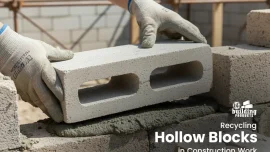
Sustainability or Functionality: What Should Our Architects Focus on?
In today’s fast-paced world, architects encounter a distinct challenge: finding the right equilibrium between sustainability and functionality in their architectural designs. With growing environmental issues and constant technological progress altering the landscape of construction; architects are under mounting pressure to emphasize sustainable methods while ensuring their creations remain practical and user-friendly. This blog will delve into the intricacies of this dilemma and examine the factors architects need to carefully consider when dealing with the convergence of sustainability and functionality.
Importance of Sustainability
Environmental Impact: Embracing sustainable design principles has the potential to greatly diminish the environmental impact of buildings and infrastructure, addressing issues such as resource depletion, pollution, and greenhouse gas emissions. Through the utilization of energy-efficient technologies, renewable materials, and passive design strategies, architects are able to lessen environmental damage and play a role in creating a more sustainable planet.
Long-Term Viability: Sustainable structures are crafted to endure over time, guaranteeing lasting strength and flexibility in response to evolving environmental factors and societal demands. By emphasizing robustness, versatility, and thorough lifecycle evaluations, architects can develop buildings that will continue to serve a purpose and stay significant for future generations.
Ethical Responsibility: Architects have a crucial role in influencing the physical environment and are ethically bound to prioritize the welfare of current and future generations. Through the promotion of sustainable design principles, architects can advance social equality, environmental fairness, and conscientious management of resources, thereby aligning their field with overarching societal principles.
Importance of Functionality
User Experience: Architectural design centers around the idea of improving the overall quality of life for those who inhabit the space. Buildings need to be practical, cozy, and suitable for the various activities they house, with a focus on meeting the needs and preferences of the users. Architects must take into account elements like the arrangement of space, the presence of natural light, proper ventilation, easy accessibility, and ergonomic design to establish environments that promote the well-being and efficiency of individuals.
Economic Viability: Architects need to ensure that buildings not only meet user needs but are also financially feasible to create and upkeep. They must carefully consider initial expenses alongside future advantages, striving to enhance efficiency and value while reducing unnecessary costs and inefficiencies. Through the incorporation of cost-efficient design strategies and materials, architects can successfully complete projects within budget limitations without compromising on quality or sustainability.
Regulatory Compliance: Architects are required to maneuver through an intricate network of building codes, zoning regulations, and industry standards during the design process of structures. Adherence to legal and regulatory mandates is crucial in order to safeguard the well-being of occupants and the local community. Despite the growing emphasis on sustainability in regulations, architects must guarantee that their designs adhere to all relevant codes and standards while maintaining functionality and safety.
Finding the Middle Ground: Architects are faced with the challenge of balancing sustainability and functionality, but it is important to understand that these goals can coexist. Rather than being mutually exclusive, they actually complement each other and can be achieved through careful design and innovative thinking. By taking a holistic approach that takes into account environmental, social, economic, and cultural factors, architects can create buildings that are both sustainable and functional. This ensures that the needs of the present are met without compromising the ability of future generations to meet their own needs.
In the pursuit of sustainable architecture, architects must navigate a complex landscape of competing priorities and considerations. While sustainability and functionality may sometimes appear to be at odds, they ultimately converge in the quest to create built environments that are both environmentally responsible and user-centric. By embracing interdisciplinary collaboration, embracing innovation, and prioritizing holistic design solutions, architects can chart a course toward a more sustainable and functional future, where buildings serve their occupants and also contribute to the well-being of the planet.




